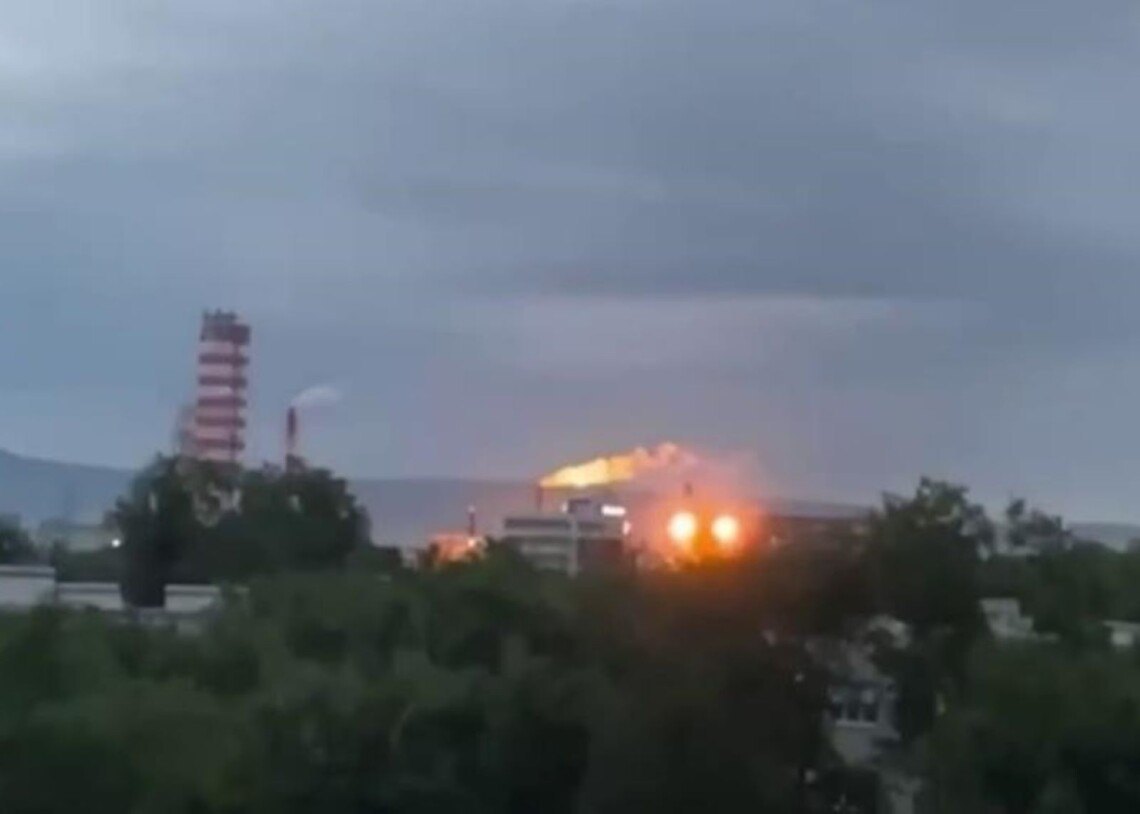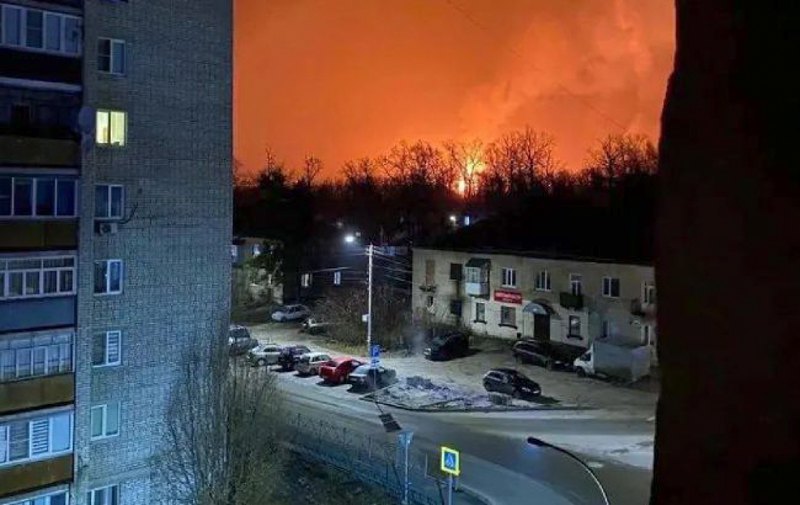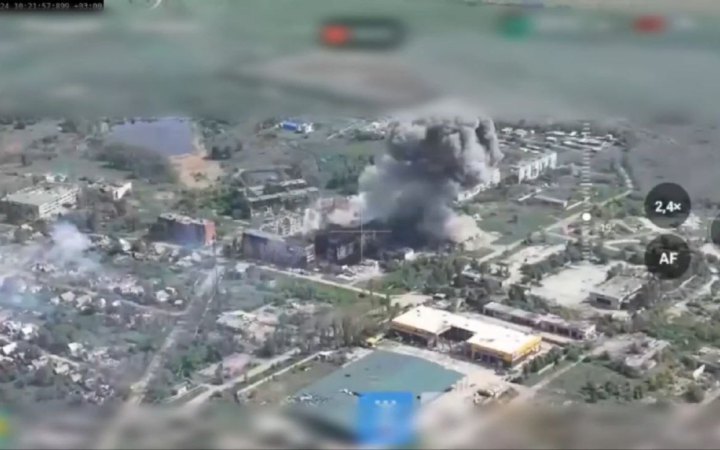
At least three dozen drones struck the Azot chemical plant in Nevinnomyssk, causing two fire outbreaks and halting technical operations. The ammonia workshop and its pipeline were hit, as well as the nitrate unit. Azot, naturally, is part of the production chain for military-grade chemicals, precursors, and munitions.
Both Azot plants in the European part of Russia have repeatedly been targeted by Ukrainian strategic strikes.
While fully disabling such a plant even with dozens of half-ton bomb hits is unrealistic, it is possible to halt production and slow the supply of shells and MLRS munitions — crucial during Russia’s summer offensive.
The Russians are noticeably short on equipment: compared to last year, only a few probing thrusts in columns — two near Mala Tokmachka in the south (they pushed anyway, clearly unhappy about the loss of five trains on the Tokmak–Volnovakha line), and one attempted push near Pokrovsk — all repelled, with the enemy losing over 30 IFVs and tanks.
Elsewhere, it’s mostly buggies, motorcyclists, small groups, infiltration and bypassing by reconnaissance and sabotage units sneaking into urban areas. In these banzai-style attacks, artillery support is absolutely critical — which makes disrupting ammunition production all the more important.
The Tambov gunpowder plant was struck for the third time — we are analysing the damage, locating finished product stockpiles and bottlenecks in order to hit them again. There are fires and detonations reported. Naturally, everything is dispersed and hard to hit in a way that disables it for weeks — but any production downtime will inevitably be felt on the frontline.

North Korean and Iranian shells still make up a significant portion of Russia’s daily ammunition expenditure, so it is strategically sound to cripple domestic production — forcing Moscow to spend foreign currency both on damage control (equipment, production lines, cranes, etc.) and on imports.
A railway hub in Novocherkassk was targeted — both the station itself and the electrical network. The degree of damage matters little here, as stations are restored fairly quickly. However, dozens of trains have been delayed by 14 hours or more.
This is a critical artery linking Black Sea ports and Rostov, from where supplies are delivered to the front between Mariupol and Kamyanske.
Power supply was also knocked out at two southern railway stations — Timashevsk and Peschanokopskoye. The goal likely involves not only cutting off front-line supply routes but also disrupting the shipment of hydrocarbons through Black Sea ports. Every halted transfer means financial loss and accelerates the economic crisis that Russia is steadily heading toward. Additionally, Iranian aid may be arriving via the Caucasus in exchange for hard currency — which would explain the choice of these targets.
Furthermore, the Defense Forces struck a Russian military position in Donetsk near the Zasyadko mine using rocket artillery. Fires and secondary detonations were reported, with personnel and equipment losses on the Russian side.

We are clearly extending our "long arm" — the Russians has no way to avoid hitting the screwdriver production of long-range drones in Ukraine, nor the supply routes through western borders, nor the “drone coalition” manufacturing, of course.
There will be more such strikes, and the amount of ammunition used will increase — the EU is increasingly investing in our missile programme; German money and technology are making a real difference. When we can strike a factory not with 30 drones but with 30 Neptunes and ballistic missiles — that’s when we’ll achieve the effect we need. But even now it’s going well; not long ago, such results would have seemed fantastic.
There are reports about the delivery of the first battery of Patriots promised by the US — this is German equipment hurriedly dispatched from Bundeswehr stock, while American industry will later halt further deliveries to Berlin.
For many reasons — mobility, vehicle base and its maintenance, firmware and upgrades — the German batteries are better for us here and now.
Another ballistic missile interception over Odesa — interceptor missiles are gradually arriving, and radar systems are operational, despite what Russian military bloggers write.
Our task is to protect more industrial centres from “short-range ballistic” and cruise missiles. At the same time, we’re opening killhouses, pilot schools, drone assembly lines, manufacturing shells, casting mines, and assembling MRAPs with screwdrivers.

The Russian summer offensive continues — the Russian Army is attacking on three sections of the front. But broadly speaking, from the outskirts of Pokrovsk, where saboteurs infiltrate through Zvirove to positions at the “sandbox” in Avdiyivka, where they broke through the old front line from the ATO era — that’s a stretch of 48 km.
This is a corps-level battlefield, the responsibility zone of about half a dozen brigades. The Russians have, for four years now, been unable to gain operational space here and only managed to do so once, during the breakthrough towards Selydove. The cost was sending marines into infantry roles, supply via donkeys and sleds, and tanks — even T-62s with additional armour — becoming a rarity.
Why Russia’s conditions for peace are unattainable
Each summer offensive, the Kremlin aims to envelop a prepared defensive node, knock out logistics with drones and artillery, encircle and destroy several old brigades, break into operational space, and push combat to any major city — Kharkiv, Zaporizhzhya, Dnipro, Sumy — yet each time fails to close the encirclement. We fall back, wear down their brigades, but cling to every forest belt and village. The war goes on. Ukraine is fiercely resisting the Russian Army.







